IAA 2018: driving tomorrow!
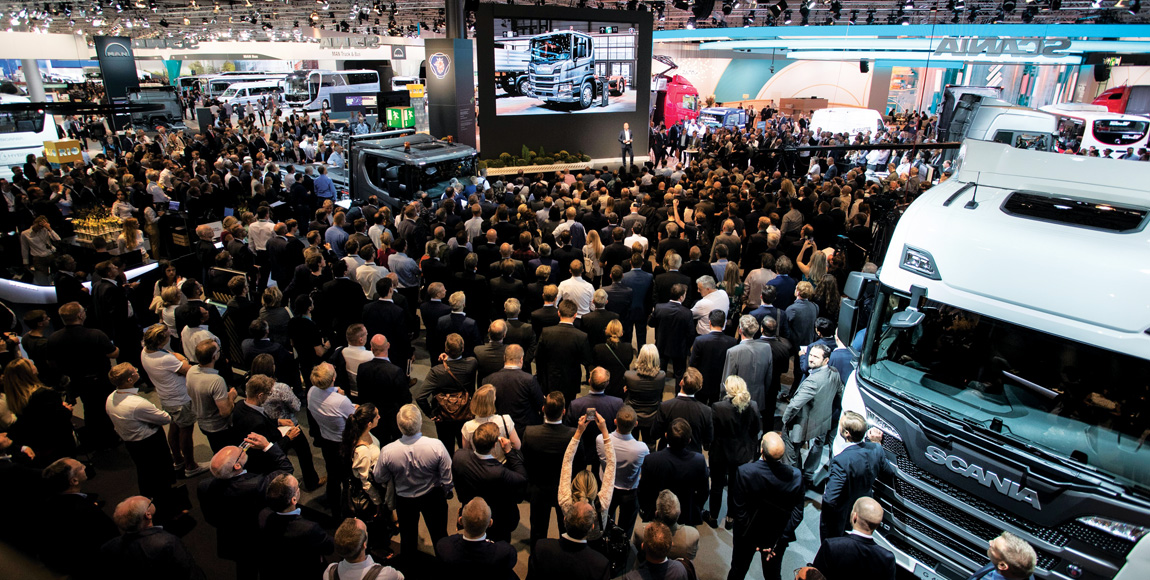
Much is always expected of the IAA and, once again, this year’s event did not fail to deliver. CHARLEEN CLARKE dashed from hall to hall during this feast of commercial vehicles and related technology. These are just some of the exhibits that caught her eye.
The numbers at the IAA – which takes place in Hannover, Germany, at the end of September every second year – are always simply staggering. Two years ago, for instance, a whopping 332 world premieres took place. That paled into insignificance this year though – because visitors were treated to no fewer than 435 world premieres from the 2 174 exhibitors, who occupied 282 000 m2 of exhibition space.
Despite sweltering heatwaves, storms and rain (the weather really was crazy this year) around 250 000 people trudged through the halls. There was certainly a lot for them to see and buy (one logistics company bought 2 500 trucks from three manufacturers during the show; another purchased 1 000 trailers).
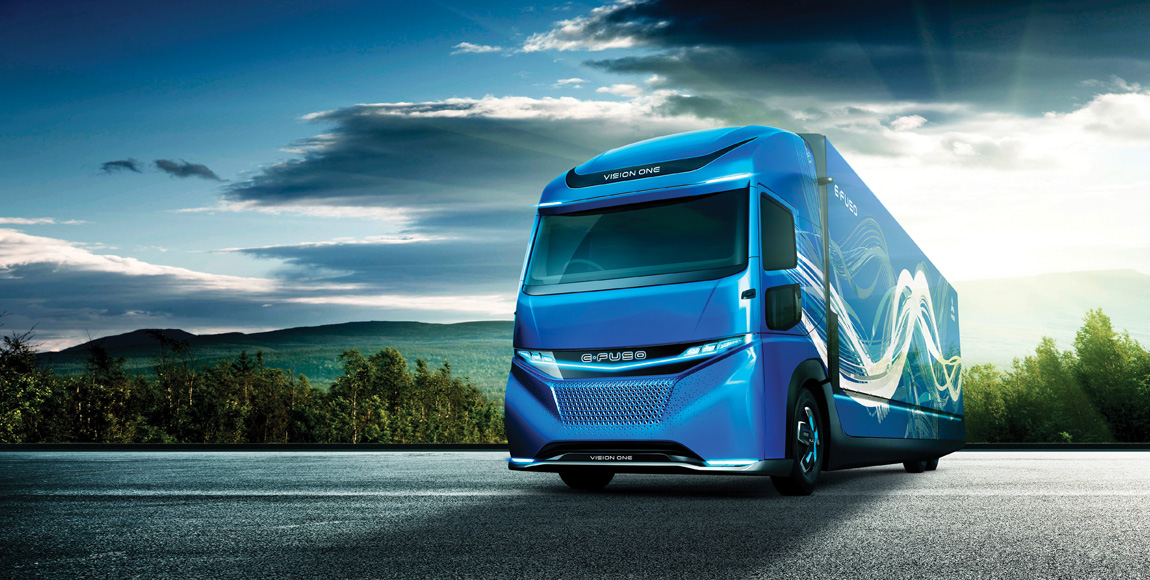
However, as Bernhard Mattes, president of the German Association of the Automotive Industry (VDA), noted in the final conference, there were a number of broad themes to the stands this year: electric mobility, digitisation, connectivity, automated driving and urban logistics.
It was interesting to see that e-mobility was not the exclusive terrain of commercial-vehicle manufacturers only. “It is especially noteworthy that at many stands clever electric cargo bikes have been on display for the first time, which provide a new answer to the question of the last mile. They are flexible, fast and environmentally friendly. So, the range of applications for commercial vehicles with electric propulsion is expanding all the time,” Mattes pointed out.
Digitisation came to the fore everywhere – at the stands of truck and bus manufacturers, trailer companies, many suppliers and, of course, telematics providers. “It is remarkable to see the great commitment of the makers of trailers and bodies to driving digitisation forward. There is even an app for digital departure checks. That means the driver receives data from the trailer, and, if necessary, warnings too,” Mattes noted.
Connectivity and automated driving go hand in hand and it was great to go for a ride in the Continental Urban mobility Experience (CUbE); a driverless people carrier. This technology was also brought to the fore when the Truck Innovation Award went to MAN for its aFAS – a level-4 automated safety truck.
It was also very much under discussion on the Daimler stand, where the star of the show (no pun intended) was the new Actros, with its fabulous cameras that replace mirrors. The Actros is a level-2 autonomous vehicle, and its safety features are extraordinary.
It was furthermore evident that the booming online trade is pushing urban mobility onwards and upwards. Urban solutions are required that are connected, electric, fast, green and quiet – and there was much evidence at the IAA that the industry is well on its way to achieving these goals.
“The commercial vehicle industry and its partners are redefining transport in towns and cities – with a high level of customer benefit for both the transport business and for consumers,” Mattes confirmed.

With these trends as a background, let’s move on to the actual exhibitors. It was obviously impossible to visit all 2 174 stands – so here are some of our highlights:
ALLISON TRANSMISSION
Allison Transmission announced that it will offer its medium-duty, fully automatic nine-speed transmission globally, and that it has developed an electric hybrid system with purely electric extended range.
With its deep first-gear ratio and industry-leading ratio coverage, the Allison nine-speed transmission provides significant fuel savings as the highly efficient geartrain allows the torque converter to lock up early in first gear.
In addition, the nine-speed includes an optional integral engine stop-start system that provides immediate transmission engagement and vehicle hold while the engine is restarted. The nine-speed transmission is ideal for distribution trucks, rental and lease trucks and school buses.
BMC
Turkey was the talk of the town at this year’s IAA, with Ford Trucks winning the coveted International Truck of the Year award. There certainly was a lot of Turkish product on show, not least of which being the vehicles from BMC.
Many FOCUS readers won’t know the company, but it is quite a big deal in Turkey. Established in 1964, BMC exports to 80 countries and is one of Turkey’s largest manufacturers of commercial and military vehicles.
The big news at its stand was the launch of the Tuğra range of trucks (which, incidentally happened in very theatrical fashion, with models, smoke and Turkish flags galore). This cab-over truck is offered in seven configurations, from construction to long-haul. Just in case you were wondering, Tuğra means “seal of the emperor” in the Oghuz language and “seal of the sultan” in the Ottoman language.
The Tuğra is powered by Cummins engines, features ZF gearboxes and comes in 4×2, 6×2, 6×4 and 8×4 guise.
CUMMINS
Cummins unveiled its PowerDrive electric-hybrid utility truck housed in a Kenworth T370. PowerDrive refers to an advanced suite of plug-in, hybrid-electric powertrain solutions spanning light, medium and heavy-duty applications. Said to be the most versatile hybrid system on the market today, the Cummins PowerDrive offers both parallel and series capabilities.
The flexible hybrid architecture seamlessly shifts between pure electric for environmentally sensitive areas with an 80-km range and hybrid for jobs requiring more than 480 km. Emissions can be reduced by up to 80 percent, while fuel savings of between 40 and 80 percent are possible.
The PowerDrive system has travelled more than 9,6-million kilometres in fleets in the United States and China, and Cummins plans to introduce it to the European market soon. Its flexible architecture means the PowerDrive system can be combined with various sizes of diesel or natural-gas engines and battery-pack outputs.
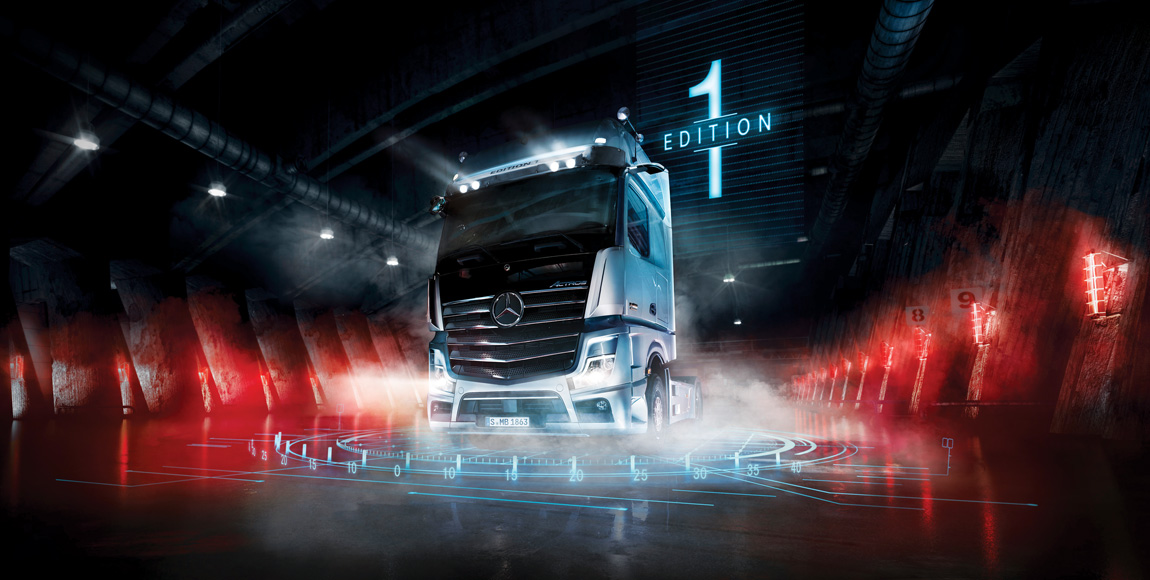
DAF
While DAF is a relatively small player here in South Africa, its heavy-duty market share in Europe grew from 15,3 percent in 2017, to 16,5 percent in the first half of this year. And it is currently the heavy-duty market leader in the United Kingdom, the Netherlands, Belgium, Poland, Romania, the Czech Republic and Hungary.
This year, DAF celebrates its 90th anniversary. Accordingly, it showed the striking DAF XF 90th Anniversary Edition at the fair. This highly exclusive truck commemorates the founding of DAF in 1928.
The vehicle features a premium options package, exclusive striping and exterior design elements, as well as the most powerful 390 kW (530 hp) Paccar MX-13 engine. DAF’s famous historic logo is proudly displayed on the front of the truck, on the sides and back of the cab, as well as in the luxurious, fully leather upholstered interior.
On display on the DAF stand were the new LF, CF and XF. The LF is ideal for distribution transport. The CF is suited to a wide variety of applications, while the flagship XF is ideal for heavy and on-highway transport. Of special interest was a new lightweight CF 8×4 mixer chassis and a unique 6×2 CF with a frame accommodating demountable bodies.
Alongside the LF, CF and XF, DAF showed one of its Innovation Trucks: the DAF CF Electric. The CF Electric is a 4×2 tractor unit developed for up to 40-t gross vehicle mass (GVM) distribution applications within urban areas.
The vehicle uses VDL’s advanced E-Power technology for fully electric operation. The centre of the intelligent powertrain is the 210 kW electric motor drawing energy from the 170 kWh lithium-ion battery pack. The CF Electric has a range of approximately 100 km. Fast charging of the batteries can be performed in 30 minutes. The CF Electric will be put into field test operation with customers this year.
However, the vehicle that probably attracted the most attention on the DAF stand was a 1967 DAF A1600. It is just so damn cute!
DAIMLER
Halls 14 and 15, traditionally known as the “Daimler halls” at the IAA, are always a feast of commercial vehicle technology, and this year was no exception. This year’s stand was all about electrification and automation and, while all the vehicles on display were mighty impressive, two stole the show: the new Actros with its fancy cameras (that replace mirrors) and the Urbanetic mobility concept.
Much has been said and written about the new Actros. However, it would be remiss of us to leave it from our special IAA report, because it really did get the tongues wagging at the fair.
The most important and spectacular new feature of the truck (apart from the cameras, of course) is the new Active Drive Assist, with which Mercedes-Benz Trucks puts partially automated driving into series production. The new Active Drive Assist can brake, accelerate and steer independently.

Unlike systems that operate only at certain speeds, Active Drive Assist enables the truck to drive partially autonomously in all speed ranges for the first time in a series-produced truck. While the driver remains responsible for monitoring the traffic situation, the system significantly reduces his workload and makes an important contribution to increasing safety on the road.
In celebration of the start of production of the new Actros, Mercedes-Benz has launched a blinged up Edition 1 model. Only 400 of these trucks will ever be produced and, judging by the attention that the Edition 1 got at the show, those will be snapped up in record time.
One of the most visionary vehicles at the show, the Vision Urbanetic from Mercedes-Benz Vans was most certainly one of the most-photographed vehicles on display. A revolutionary mobility concept that goes way beyond existing ideas on autonomous vehicles, it also looks utterly amazing.
The Vision Urbanetic reflects the future direction of Mercedes-Benz Vans, which is clearly both electric and autonomous. Designed to move people or transport goods, the Vision Urbanetic can carry different interchangeable bodies for people moving or goods transportation.
As a ridesharing vehicle, the Vision Urbanetic can carry up to 12 passengers, while the cargo module can accommodate up to ten EPAL palettes. It offers a load length of 3,7 m and an overall vehicle length of 5,14 m. Thanks to full connectivity, the Vision Urbanetic can shorten waiting or delivery times and avoid traffic jams. It is a massively clever and impressive concept.
Of course, the Vision Urbanetic was not the only electric vehicle on the Daimler stand. From the battery-electric eCitaro city bus to the all-electric heavy-duty eActros, the electric eVito and eSprinter and the E-Fuso Vision One concept truck (a stunning three-axle truck for distribution transport, which has a range of up to 350 km), the stand was crawling with all things electric. Incidentally, customer deliveries of the electric eVito will commence at the end of the year, with the eSprinter following in 2019.
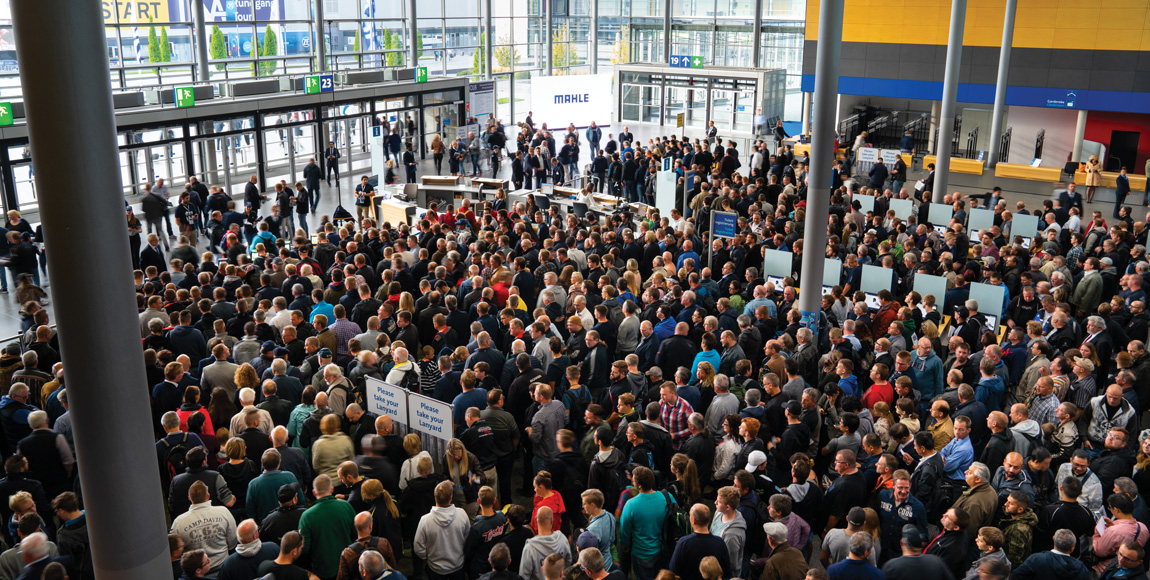
Speaking of the Sprinter, it enjoyed a strong showing – and the wide range was emphasised (panel van; tourer; chassis cab; front-wheel, rear-wheel or all-wheel drive; low-emission diesel engine, all-electric or Concept Sprinter F-CELL with fuel-cell drive).
The new Sprinter was flanked on the exhibition grounds by the Vito, V-Class, Citan and X-Class, which celebrated its IAA premiere. The Vito boasts a new infotainment system with touchscreen and integrated navigation.
Daimler Trucks is also working hard on electric vehicles for the North American market. Accordingly, the all-electric Saf-T-Liner C2 Electric Bus, also known as “Jouley”, was on display, as were two completely new all-electric Freightliner trucks: the heavy-duty eCascadia and the medium-duty eM2. These are not just concept trucks; customer testing is commencing as you read this report.
Another notable display was that of the Mercedes-Benz Citaro hybrid bus, which received the Sustainable Bus Award 2019 for rural-service buses at the IAA. This bus offers fuel savings of 8,5 percent versus conventional diesel-powered units.
One other important bit of news emerged on the Daimler stand. At the press conference, the company announced that it was investing in Proterra, a company based in California that is a leader in the design and manufacture of zero-emission heavy-duty buses. This gives an indication of Daimler’s future intentions, which are clearly green and electric.
FORD TRUCKS
The big news at the Ford Trucks stand was the reveal of the F-Max, which is the 2019 International Truck of the Year. We have driven and reported on the F-Max (see FOCUS issue 10/2018), so we will not repeat ourselves.
However, it is perhaps significant to note that the truck has been tested in 11 countries on four continents using 233 prototype units. This involved 15 500 hours of lab testing and five-million kilometres of road testing. It is going to be really interesting to watch market acceptance of this truck, which is surprisingly good and a most deserving Truck of the Year winner.
Also on the stand was the fabulous F-Vision Future Truck concept vehicle. Electrically powered, of course, this
level-4 autonomous truck is a clear indication of the company’s thinking when it comes to electrification, autonomy and connectivity. It was apparently inspired by Marvel comic books, and it sure is one good looker!

GAZ
GAZ, the biggest manufacturer of commercial vehicles in Russia, is renowned for serving vodka and displaying some superb new vehicles at the IAA. We had no time to partake in the vodka this year, but we did inspect the vehicles enjoying their world premieres on the stand.
These included the GAZelle Next Euro-6 light commercial vehicle (which features a Euro-6 Volkswagen diesel engine, six-speed gearbox, airbags and ESP) and Sadko Next right-hand-drive off-road truck (which has a payload capacity of three tonnes and will be available in both right- and left-hand drive). It was also interesting to see a Ural 6×4 road truck on display (Ural trucks are normally used off-road).
Not to be left out from the electric vehicle party, GAZ exhibited the GAZelle Next electric vehicle, which was exhibited in minibus guise (with a passenger capacity of 16). It features a Siemens AC induction motor, range of 100 km and fast charging time of 30 minutes.
GAZ also demonstrated its GAZ Connect digital telematics platform, which allows for the monitoring of over 50 different parameters of vehicle systems and live vehicle tracking.
HYUNDAI
Hyundai trucks powered by hydrogen fuel cells are about to go into service on European roads for the first time! That was the big news on the Hyundai stand this year. The company signed a Memorandum of Understanding with Swiss hydrogen technology company H2 Energy at the IAA.
Together, they will manufacture 1 000 heavy-duty fuel-cell electric trucks for the Swiss commercial vehicle market between 2019 and 2023. The truck features two 190 kW hydrogen fuel-cell systems coupled in parallel, and has a range of around 400 km.
IVECO
Well, absolutely everyone was talking about Iveco at this year’s IAA following the company’s startling decision to have a diesel-free stand. We were lucky enough to score an exclusive interview with Pierre Lahutte, Iveco brand president, as our last issue was going to press. Read all about his progressive, bold thinking in issue 10/2018 of FOCUS. What then DID the company display?
One of the most startling vehicles was the Crealis Electric Bus, which was named Sustainable Bus of the Year at the exhibition. The bus also enjoyed its world premiere at the IAA.
This is a very clever vehicle; its on-board batteries have been reduced to a minimum thanks to its In-Motion Charging technology. The vehicle combines electric overhead lines with a small on-board battery, thereby allowing new electric- bus routes to be deployed, at no extra cost, even if there are sections without overhead lines.
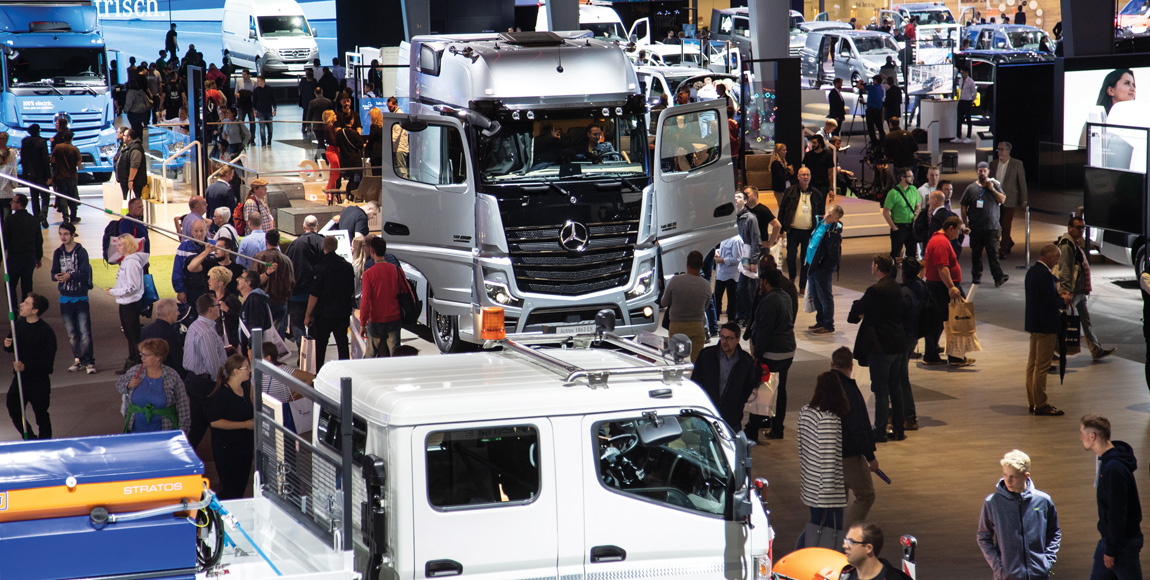
Operating time is maximised as the vehicle’s batteries recharge automatically when running on roads with overhead lines. The Crealis In-Motion Charging is also capable of running on batteries for 25 to 40 percent of the route.
A total of 17 other vehicles (all completely diesel free) were also on the stand. These included the zero-emission Daily Electric Minibus, Heuliez GX ELEC full-electric city bus, the compressed natural gas (CNG)-powered Iveco Crossway low-entry bus, the Daily Natural Power and two Eurocargos for municipal applications (both powered by CNG).
There were lots of Stralis NP models on the stand, including the first 343 kW (460 hp) liquefied natural gas (LNG) truck for swap body applications equipped by SDG/Spier; the first 6×2 LNG tractor with 750-km autonomy; a 4×2 LNG tractor with 1 600-km autonomy; and a low tractor in LNG version with 1 150-km autonomy.
JOST
Jost presented the JSK 34 sensor coupling version of the ultralight JSK 34 fifth-wheel coupling, which the company developed specifically for tankers and silo trucks. For the first time, Jost showed a biodegradable high-performance lubricant for its fifth-wheel couplings.
Jost offers one of the most comprehensive portfolios worldwide for landing gears and exhibited highlights from the Jost Modul series, including its newest member, Optima. The ideal solution for long-distance transport applications, it is based on the highly reliable Modul components and offers a higher payload and thus higher trailer efficiency thanks to its low weight.
It is available in all three plate positions and four different mounting heights and conforms to the market-standard mounting dimensions. The landing gear will be available from the second quarter of 2019.
Jost also showed its Modul E-Drive electric landing gear, which is said to offer significantly higher comfort, work safety and efficiency.
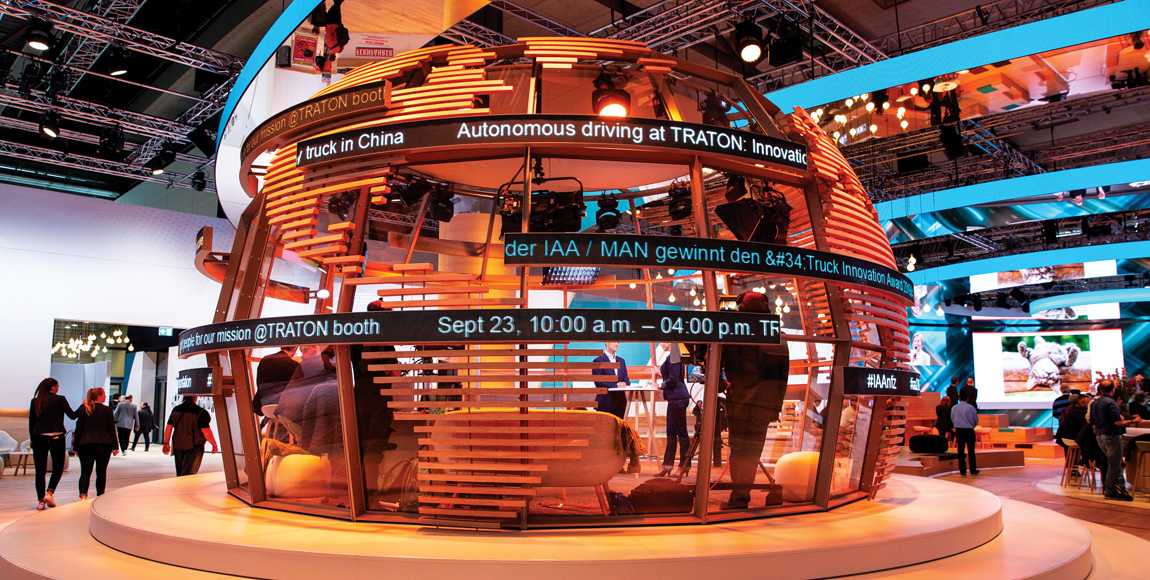
KARSAN
Karsan Automotive Industry and Trade Anonymous, another Turkish company, launched its new Atak Electric bus at the IAA. We were very interested to discover that the company is developing its electric buses with the help of BMW.
The eight-metre-long Atak has a BMW battery system of 5×44 kWh, which can be recharged fully in 2,5 hours. The range is an impressive 300 km. Features include a ramp for easy access, ergonomically designed seats, USB ports and a powerful air-conditioning system. It has a capacity of 57 passengers.
This is the second collaboration between Karsan and BMW. The first yielded the Jest Electric, which carries 26 passengers and has a 165-km range.
KÖGEL TRAILER
The big news on the Kögel stand was the new Novum generation of trailers, which took first place in the 2019 Trailer Innovation Awards (concept category).
Kögel claims that its Novum trailers are setting new benchmarks thanks to their new external frame and body; new, optimally designed Kögel modular system with optimised uniform modules, and an extremely high level of individualisation.
In future, all Novum generation vehicles will have a sturdy, torsion-resistant welded frame with full-width cross beams for high payloads and concentrated loads. Even more stability is provided by a new, slimmer, yet stronger, rear cover plate, as well as the new air and lighting console on the front wall, which transfers forces along the side member to the frame.
Also on the Kögel stand was a concept vehicle featuring the new Kögel Box Light in its three-axle version with plywood walls and a lightly insulated roof. With a low tare weight of 6 100 kg and up in the basic version, the Kögel Box Light boasts up to 730 kg of extra payload compared to the standard model.
MAN TRUCK & BUS
Everyone raved about the MAN press conference at the IAA, because the company pulled a rabbit out of the hat in the form of an incredible concept vehicle called the MAN CitE. When the vehicle suddenly appeared on the stage, the applause it received was nothing short of rapturous. An electrically driven city truck full of new ideas and creative solutions, the 15-t vehicle (which was developed in just 18 months) was designed for inner-city distribution transport.
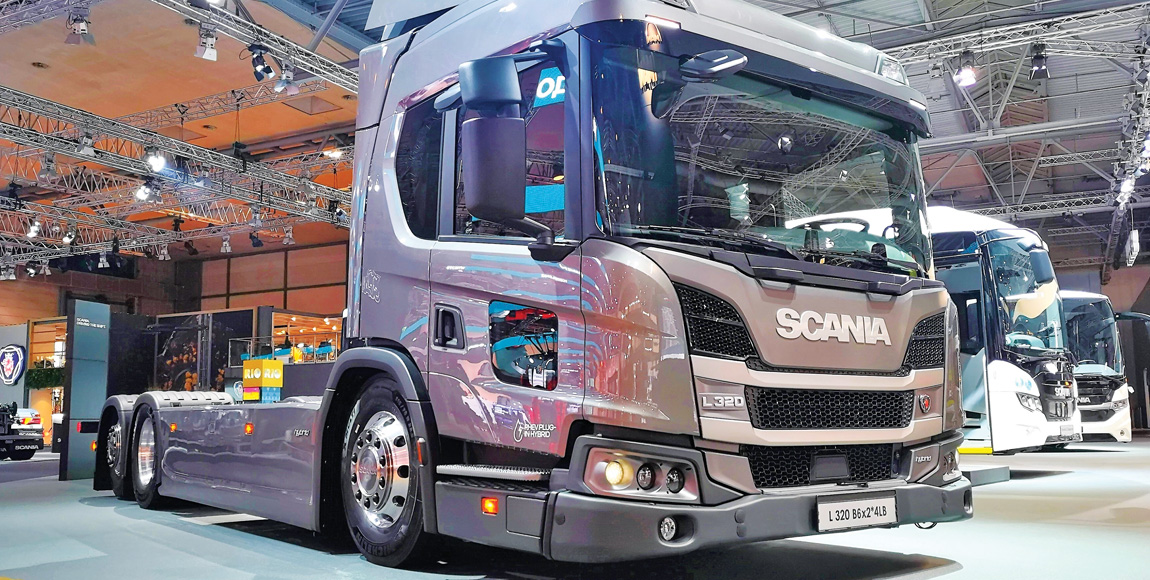
Due to the fact that delivery drivers in urban areas can enter and exit their vehicles up to 30 times a day, the CitE has an unusually low entry height and especially wide doors; the co-driver’s door opens at the press of a button. The cockpit affords the driver an excellent panoramic view, due to a low seating position and large side windows; we sat in the driver’s seat and you really can see forever…
Additionally, the CitE employs a 360o camera system to provide the greatest possible level of safety and to eliminate dangerous blind spots. A panoramic view is shown on the large central display of the integrated entertainment and navigation system.
The CitE is purely electrically driven. The e-motor has up to 290 kW peak performance; a lot of power for a six-tonne payload with a permissible gross weight of 15 t. The battery capacity of 110 kWh allows for a range of 100 km – more than enough for delivery transport in the city. It can be fast charged in 45 to 60 minutes. The lithium-ion batteries are located under the vehicle frame.
The chassis is completely cladded, which increases safety for other road users and guarantees better protection of the batteries in the event of an accident.
The MAN CitE is equipped with specially designed Continental tyres, which have a specially manufactured tread and distinctive blue stripes on the sidewall. They are seriously cool (like the rest of the truck, actually).
The CitE was only one of a plethora of electric vehicles on the MAN stand (the company is one of the first to present fully electric solutions for the entire field of city logistics between three and 26 t). Also on display was the MAN eTGE; ̶a battery-electric version of the new MAN van; and its fully electric distribution truck, the MAN eTGM.
The electric avenue at MAN was not limited to trucks… A close-to-series prototype of the MAN Lion’s City E
also made its début at this year’s IAA. The electric bus is driven by a central motor on the driven axle, which allows space for an optimised seating area in the rear, providing the bus with up to four additional seats. The crash-proof batteries are located on the roof to save space. The bus has a range of up to 270 km and it can be charged in just three hours.
A demo fleet of electric buses will be tested in different European cities in everyday use in 2020. Thereafter, series production of the battery-electric version of the new MAN Lion’s City will begin.
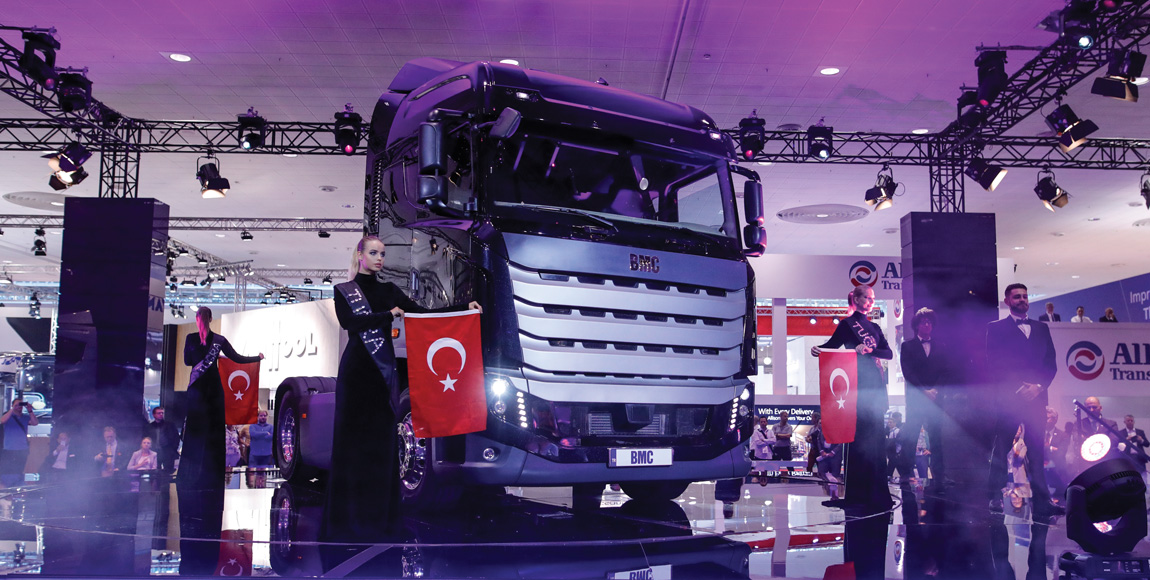
NISSAN
Nissan had such a flipping cool concept vehicle on its stand! It was called the Nissan Navara Dark Sky, and it was developed in collaboration with the European Space Agency. The concept, according to Nissan, proves that the sky is never the limit (pun most definitely intended; you will soon see why).
The Nissan Navara Dark Sky is a mobile astronomy lab, featuring an ultra-high-power PlaneWave telescope on a bespoke off-road trailer. Once at its destination, the trailer module’s mechanised roof can be opened to focus the telescope on the night sky. Using a 40-cm primary mirror, it has the ability to give detailed views beyond the rings of Saturn, to distant galaxies, nebulae and supernovas.
Naturally, the Navara – powered by a 2,3-litre, twin-turbo diesel engine – is the perfect way for astronomers to conduct observations of the universe from hard-to-reach, so-called “dark sky” locations – away from the night-time glow of urban areas.
It comes with portable battery packs utilising electric-vehicle technology from the Nissan Leaf to ensure auxiliary power supply, no matter how remote the location.
There are so many clever features in this concept vehicle. Just one is the reflective orange piping on the seats, which provides visibility inside the vehicle while negating the need for white lights that would disrupt the astronomer’s night vision. Since red light affects human night vision least, both the vehicle and trailer exclusively use red lighting to avoid visual disruption during observations.
The trailer incorporates a special refrigerated atmosphere, allowing the telescope to remain stable and calibrated at the optimum temperature in transit to any location. Additional smart features include Wi-Fi, a laptop station and UHF transmission to relay data instantaneously, anywhere in the world.
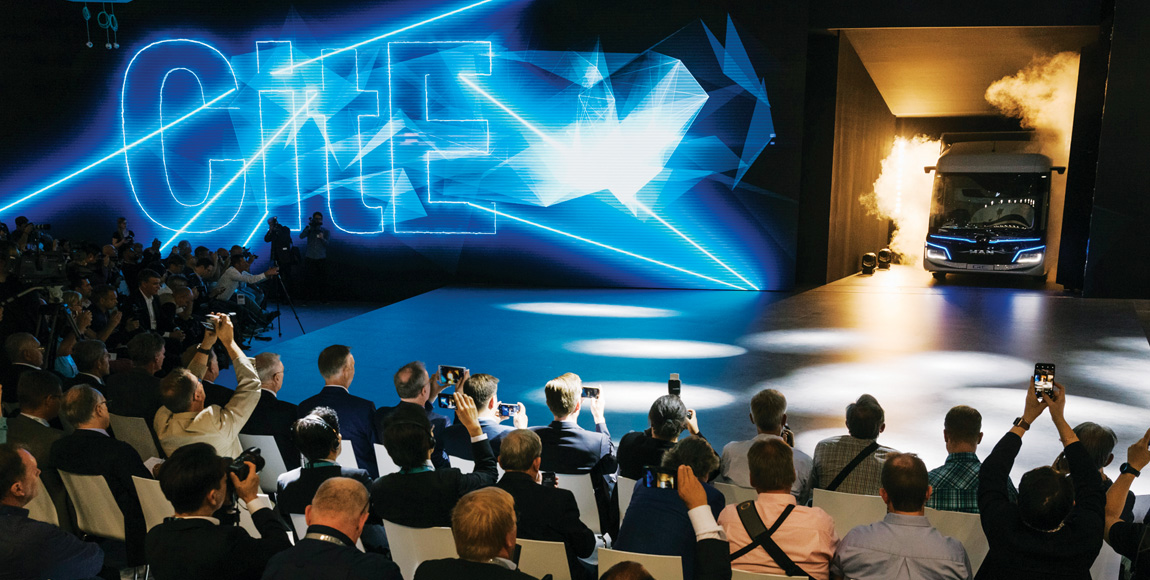
PIRELLI
Pirelli launched so-called “renewed” versions of Cyber Fleet Smart and Cyber Fleet Gate at the fair.
The Cyber Fleet Smart system is a plug-and-play solution, composed of sensors (fitted to the inner liner of the tyre) that communicate directly to a free Smart App, which can be installed onto the smartphone of the fleet manager, vehicle driver, or owner.
Whenever the tyres are checked, sensors send information about pressures and temperatures directly to the Smart App and alarms are triggered when there is an issue. Tyre checks are conducted in seconds! The tyre-status data is then transmitted to the Pirelli cloud and shared with any devices the customer has authorised. Customers receive a monthly tyre-usage report.
Cyber Fleet Gate is an evolution of the Smart App and includes remote tyre-monitoring activities. A “traffic light” fitted at the warehouse captures data from the sensors and analyses it in real time. A green light comes on if all the tyres are in good nick and a red one comes on if they are not. Pretty clever huh?
RENAULT
The spotlight was on electric mobility on the French constructor’s stand, as Renault Trucks presented vehicles from its ZE range. As a pioneer in electro-mobility, Renault Trucks has just announced the launch of its second generation of 100-percent electric vehicles (we drove and wrote about them; see FOCUS issue 10/2018).
SCANIA
The big news on the Scania stand was the launch of a plug-in hybrid-electric vehicle (PHEV) truck and a hybrid-electric vehicle (HEV) truck. What was truly significant is that neither are concept vehicles; the HEV can be ordered right now and the PHEV will follow in 2019.
The new hybrid trucks are powered by Scania’s DC09, an in-line five-cylinder engine that can run on hydro-treated vegetable oil or diesel, working in parallel with an electric motor generating 130 kW (177 hp) and 1 050 Nm.
The lithium-ion rechargeable battery’s energy window is set to 7,4 kWh to secure a long battery life. The trucks can be driven in full-electric mode without any support from the combustion engine, thanks to electric auxiliaries for steering and brake air supply.
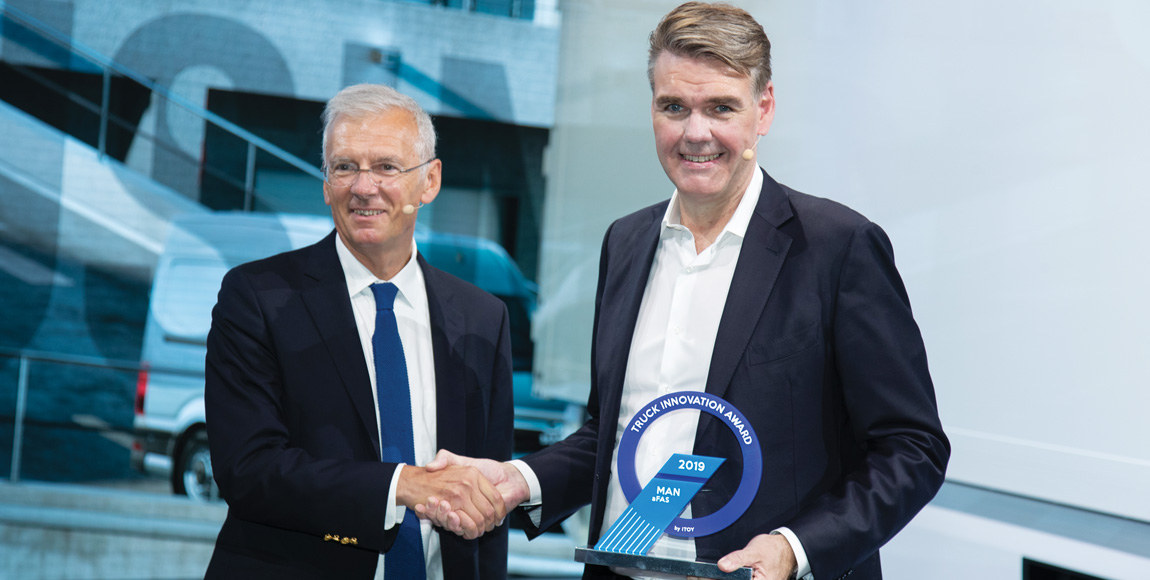
Equally notable was the launch of the world’s first gas-fuelled, long-distance coach. The new Scania Interlink Medium Decker coach is powered by LNG and has a range of up to 1 000 km. The launch of this vehicle is truly significant; while several options for carbon-conscious city and suburban bus operators have been available for some time, there have been fewer alternatives in the long-distance market.
LNG-powered vehicles can reduce CO2 emissions by 20 percent while also substantially reducing nitrogen oxide and particulate matter emissions. Additionally, noise levels are significantly lower.
SCHMITZ CARGOBULL
There were big celebrations on the Schmitz Cargobull stand when news broke that the company had won the Trailer Innovation 2019 prize for its SmartTrailer concept.
Schmitz Cargobull, the European market leader in the trailer sector, is represented in South Africa by GRW. (It recently acquired 33 percent of the shares in the South African trailer manufacturer.)
The SmartTrailer concept is based on a new generation of the telematics hardware, which also includes optional sensor equipment. In the past, each individual component was generally treated as a stand-alone unit, dependent on its own sensor and transmission elements.
In the SmartTrailer concept, however, every component is directly linked to the telematics control unit – be it the tyre-pressure monitoring system, door sensors, door-locking system or temperature recorder.
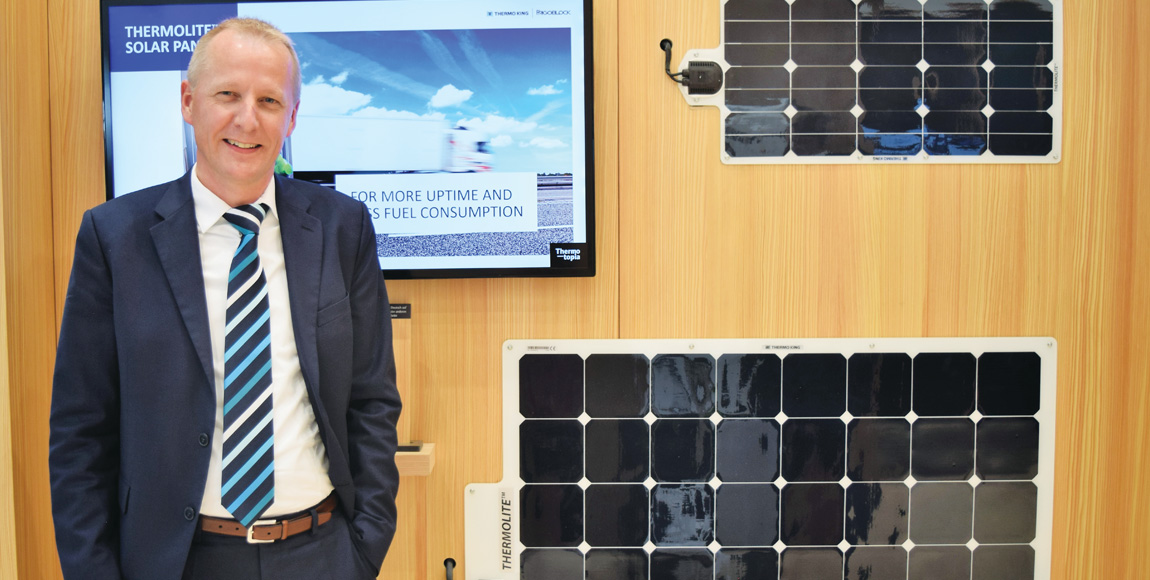
THERMO KING
Thermo King and Frigoblock are synonymous with refrigeration. However, as we discovered during an exclusive interview with Pauli Johannesen, vice president and general manager for truck, trailer and bus at Thermo King in Europe, Middle East and Africa, the companies are eyeing more than just refrigeration.
“Here at the IAA, we are launching our new 24-V Thermo King ThermoLite solar panels, which complement the ThermoLite family of 40 W and 110 W solar panels,” he told FOCUS. These clever new solar solutions can power the truck´s batteries.
Thermo King and Frigoblock also presented Thermotopia – a vision of a city of the future – and visitors were able to have a go at driving a refrigerated truck, using virtual-reality glasses.
We had a bash; it was both informative and great fun. Thermotopia is a city where the transport refrigeration industry ensures the safety of transported foods and goods for rising populations, while eliminating smog, congestion and excessive noise.
Naturally, Thermo King and Frigoblock presented a comprehensive range of technologies that could be put to work in Thermotopia (or, in fact, today … since they are all market ready).
These included the new E-200 full-electric refrigeration unit (for both electric and engine-powered vans and trucks below 3,5 t); modernised SLXi trailer refrigeration units (now featuring the upgraded, lower-emission and quieter GreenTech engine) and a new self-powered T-560R refrigeration unit with 20-percent more capacity and better pull down.
Also on the stand, we spotted a new Prisma S-4.2 low-height dual-discharge evaporator for T-Series and SLXi multi-temperature truck and trailer refrigeration units, and the new Thermo King TracKing connectivity services. The latter is said to enable customers and the Thermo King dealer service network to leverage the era of digitisation to increase uptime, operational efficiency and move from reactive towards proactive maintenance.

VOLKSWAGEN
Volkswagen had a lot of cool stuff on its stand, but we really liked the Cargo e-Bike and ID Buzz Cargo concept van. The former is a tricycle, which can carry up to 210 kg – including the driver – and can handle a cargo volume of 0,5 m3.
Equipped with a 250 W mid-mounted motor with an automatic gearbox, it has a small turning circle and innovative tilt-compensating technology, which always keeps the load platform horizontal.
The ID Buzz Cargo concept van, on the other hand, is a funky retro electric van, which boasts a clever electrified shelving system. All items on the shelves can be tracked. If someone needs an item, they can have it delivered automatically. The doors can be opened electrically, and the shelving system can be customised. It could be sold by 2022 in North America, Europe and China. (And please, Volkswagen, South Africa too?)
VOLVO
Vera, an autonomous, electric concept vehicle that can operate with significantly less exhaust emissions and low noise levels, was one of the most popular exhibits at the IAA; it was hard to get close to this futurist and radically different mode of transport.
Unlike other driverless trucks, Vera has no cab. Instead, it is a flat pod, which accommodates a 300 kW, lithium-ion battery pack that gives it a range of up to 300 km. Able to pull loads weighing up to 32 t, Vera can be attached to any standard trailer.
Volvo also unveiled its all-new platform for tourist and line-haul coaches at the IAA. With a striking design, fuel-saving aerodynamics and safety of the very highest level, this is another leap forward for the premium coach manufacturer. The range encompasses two models: the luxurious Volvo 9900 and the versatile Volvo 9700.

ZF
E-mobility and autonomous driving are very important for ZF and, at the IAA, the company announced that it intends investing more than €12 billion (about R271 billion) in these areas over the next five years.
Of course, it is already doing so much in these areas, as we have previously reported in FOCUS. For instance, it announced at the IAA that it has already received orders for more than 1 000 of its AxTrax AVE electric portal axles. These will soon be contributing to 60-million, zero-emission passenger kilometres each year in cities such as Los Angeles, London or Stuttgart.
ZF is accelerating the electrification of the drive in other commercial vehicle segments, too. For example, it has received a volume production order for its new CeTrax electric central drive, which is suitable for both buses and trucks, for deployment in shunting vehicles. The electric axle-drive system for light commercial vehicles will go into volume production in mid-2019.
ZF is also proving to be a pioneer in the electrification of heavy-duty trucks. For instance, it has conducted a field test of the TraXon Hybrid commercial vehicle transmission in conjunction with DAF. With its all-electric manoeuvring, as well as numerous hybrid functionalities, a potential fuel saving of between five and seven percent is up for grabs.
Well folks, that’s it from us in terms of the 67th IAA. The 68th IAA takes place from September 24 to October 1, 2020. The FOCUS team will see you there!
Published by
Charleen Clarke
focusmagsa




